
Resource Library
Good decisions require good data and information. Search the Resource Library for data and policy products on population, health, and environment issues. Browse collections, explore policy briefs, watch videos, and put the data in context.

Project: Appalachia: Demographic and Socioeconomic Trends
Appalachia’s Strengths and Vulnerabilities Before COVID Pandemic: Report Offers Benchmark
Longstanding vulnerabilities suggest that some groups in Appalachia risk greater hardship related to the COVID-19 pandemic.
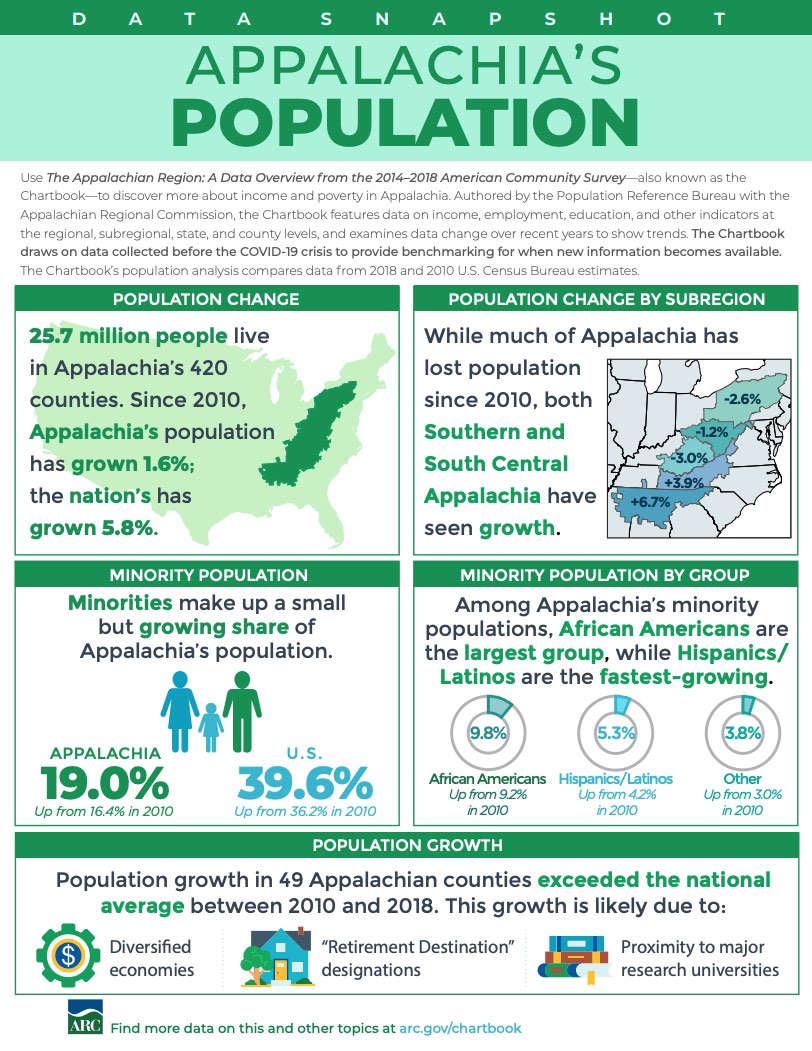
Project: Appalachia: Demographic and Socioeconomic Trends
Data Snapshots. On Appalachia: Population, Education, Employment, Income & Poverty, and Computer & Broadband Access (2014-2018)
A look at population, education, employment, income, poverty, and computer/broadband access in Appalachia 2014-2018.

Project: Appalachia: Demographic and Socioeconomic Trends
Appalachian Region Data Overview from the 2014-2018 American Community Survey
The latest report on the Appalachian Region can help state and local policymakers build community capacity and strengthen economic growth.

Project: Appalachia: Demographic and Socioeconomic Trends
Report Explores Appalachia’s Current Strengths and Vulnerabilities
The latest report on the Appalachian Region can help state and local policymakers build community capacity and strengthen economic growth.
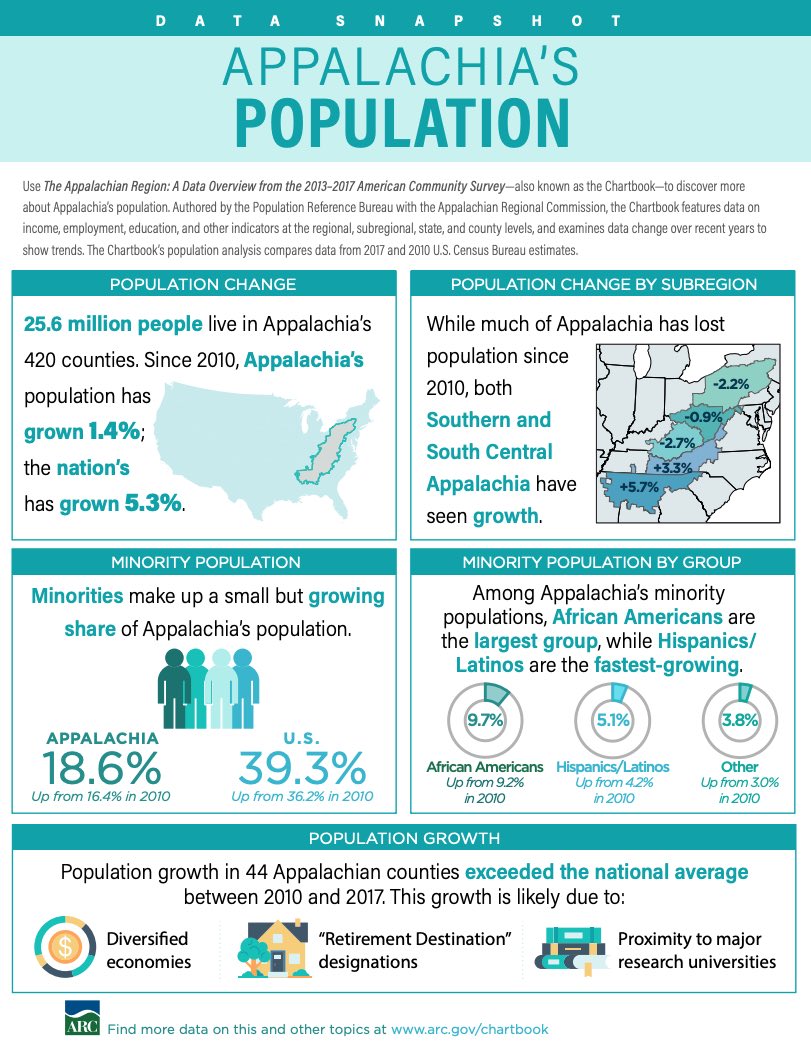
Project: American Community Survey and Decennial Census Support Services
Data Snapshot. Appalachia’s Population (2013-2017)
25.6 million people live in Appalachia's 420 counties. Since 2010, Appalachia's population has grown 1.4%; the nation's has grown 5.3%.

U.S. House Seats Are Shifting South and West Based on Population Changes
The Census Bureau’s state-level population estimates for 2018 provide a window into the potential redistribution of seats in the U.S. House of Representatives when the 2020 Census numbers are released.
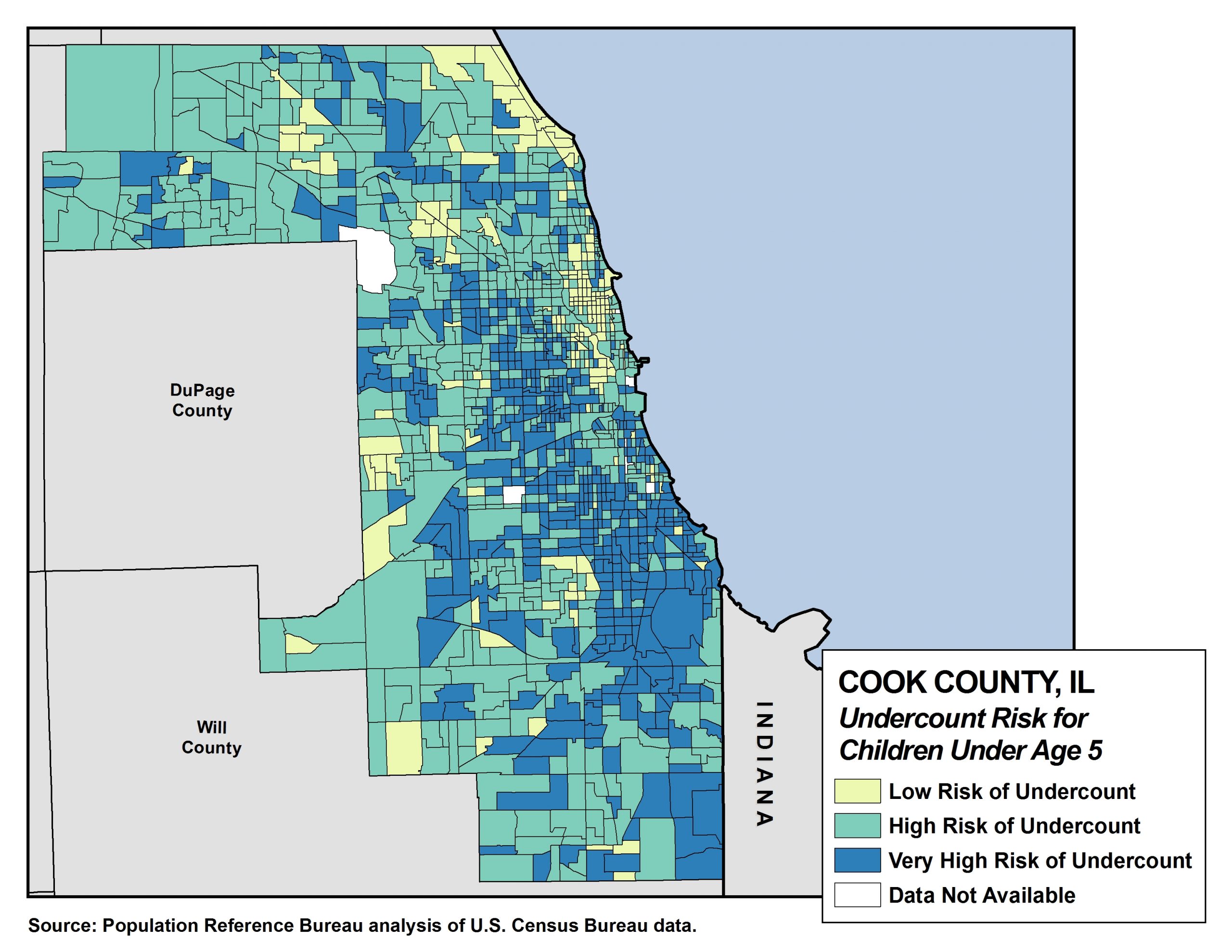
Maps. 12 County Maps with Captions for Undercount Risk for Children Under Age 5
Our analysis focuses on the factors that are most closely associated with the net undercount of children in the census, based on the Census Bureau’s Revised 2018 Experimental Demographic Analysis Estimates.
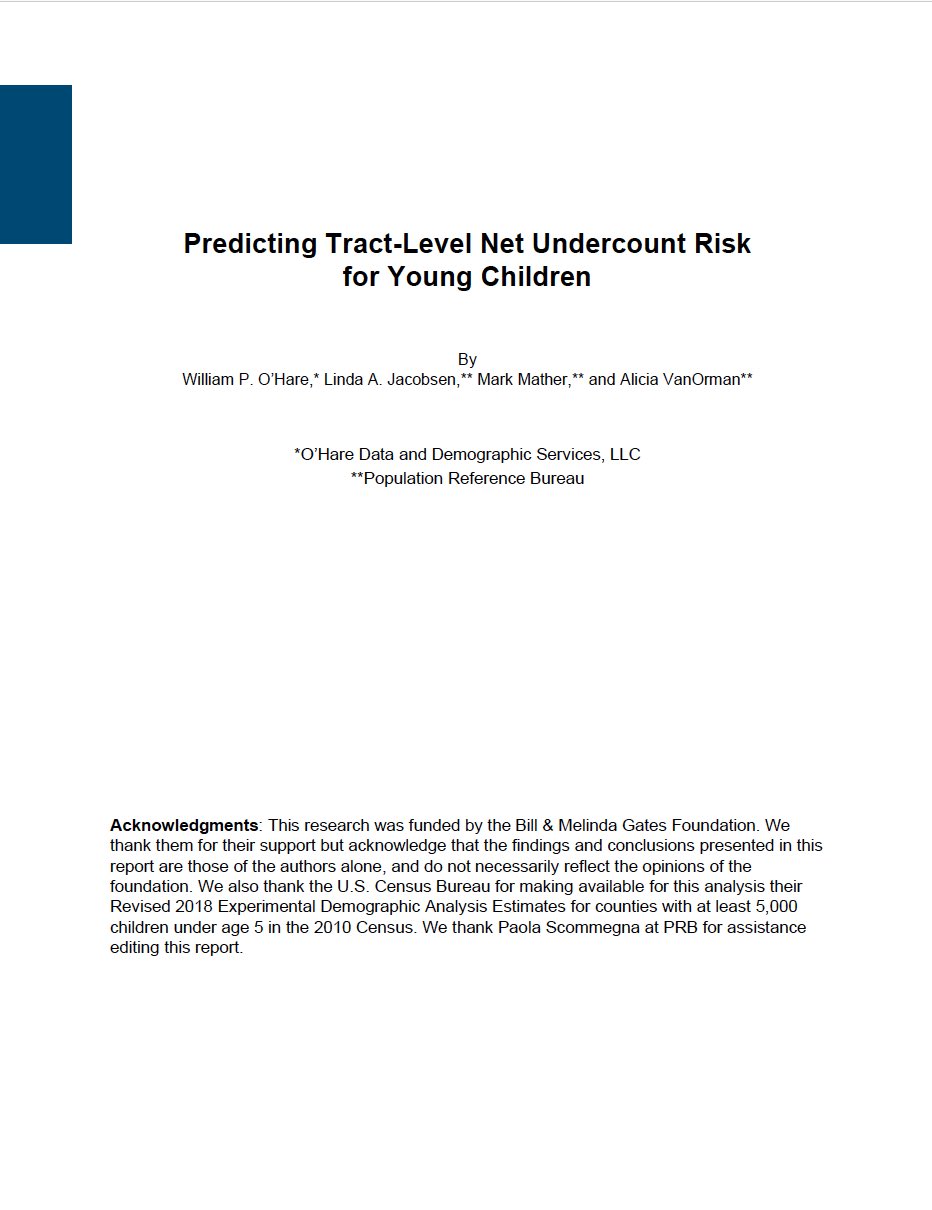
Report. Predicting Tract-Level Net Undercount Risk for Young Children (2020)
Our analysis focuses on the factors that are most closely associated with the net undercount of children in the census, based on the Census Bureau’s Revised 2018 Experimental Demographic Analysis Estimates.
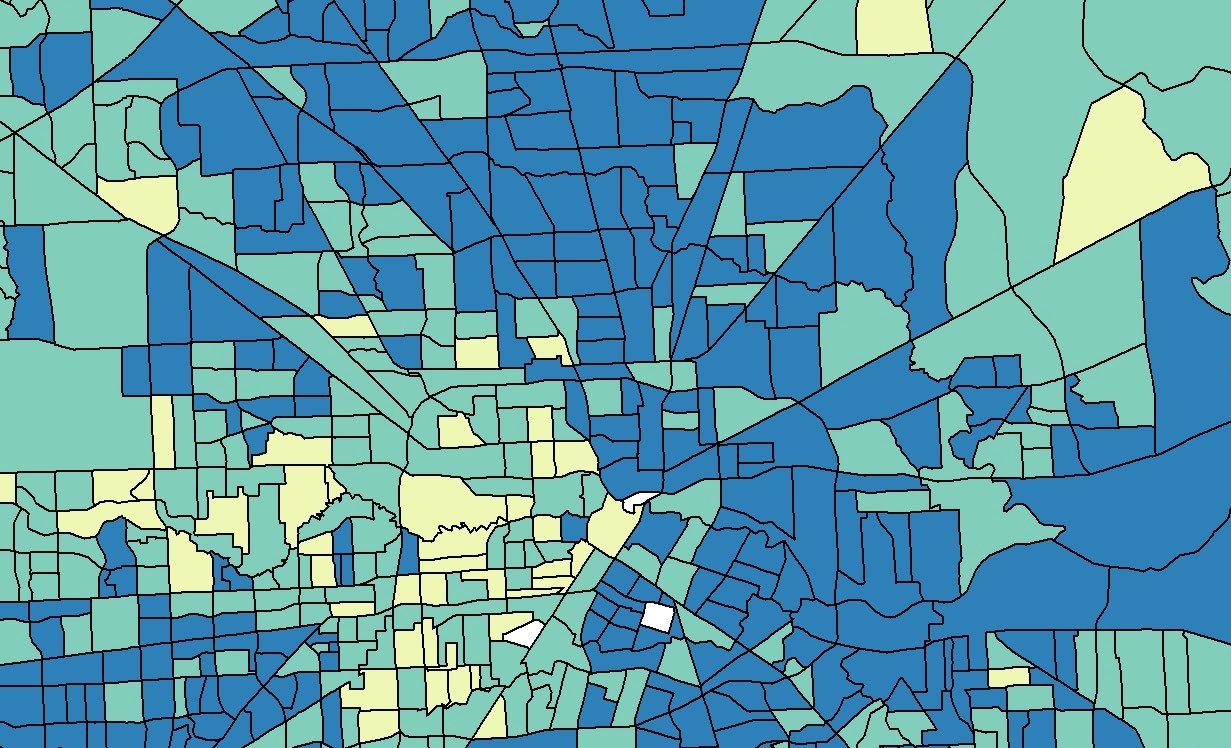
Database. Child Undercount Risk Database (2020)
PRB identifies factors predicting where children under age 5 are more likely to be missed in the 2020 Census and develops a new undercount risk measure for young children.

Project: American Community Survey and Decennial Census Support Services
Research Identifies New Strategies to Reduce Undercount of Young Children in U.S. 2020 Census
PRB identifies factors predicting where children under age 5 are more likely to be missed in the 2020 Census and develops a new undercount risk measure for young children.
